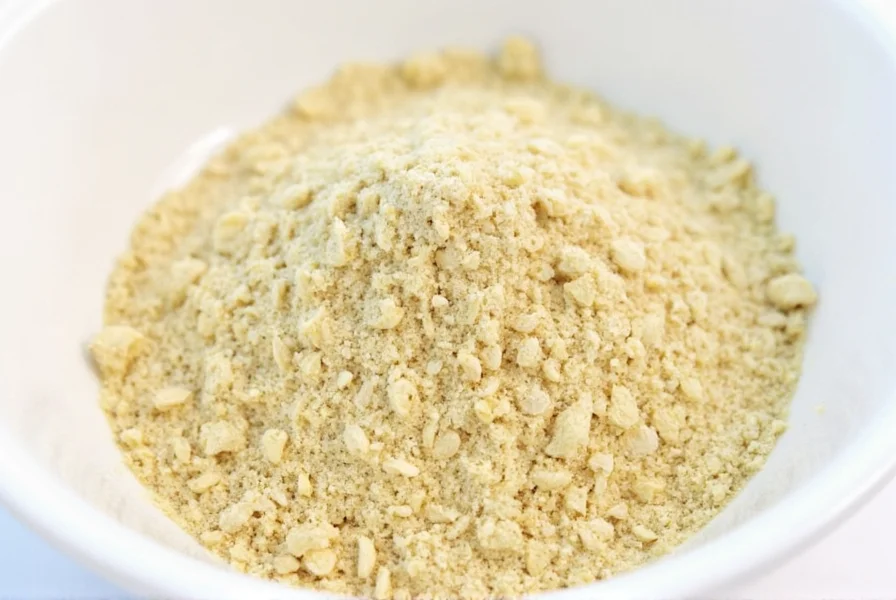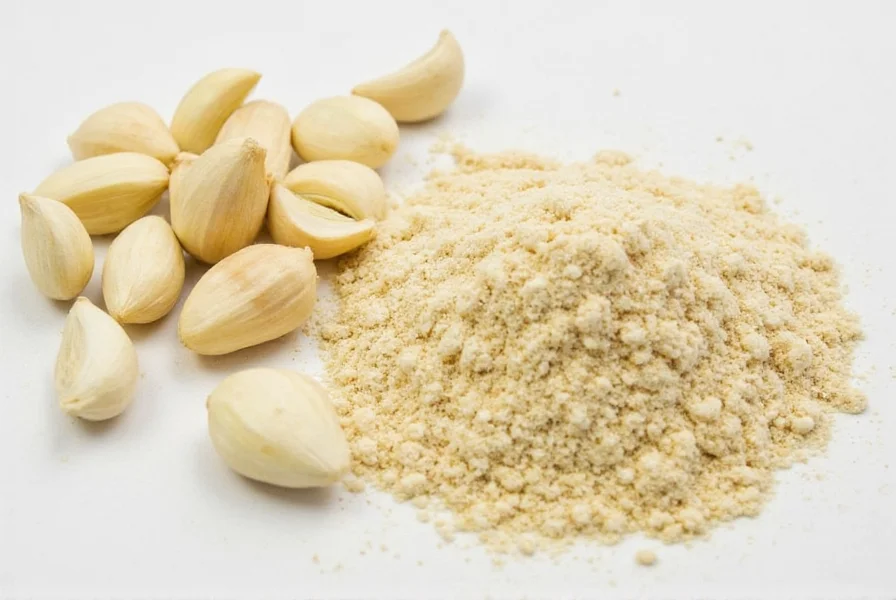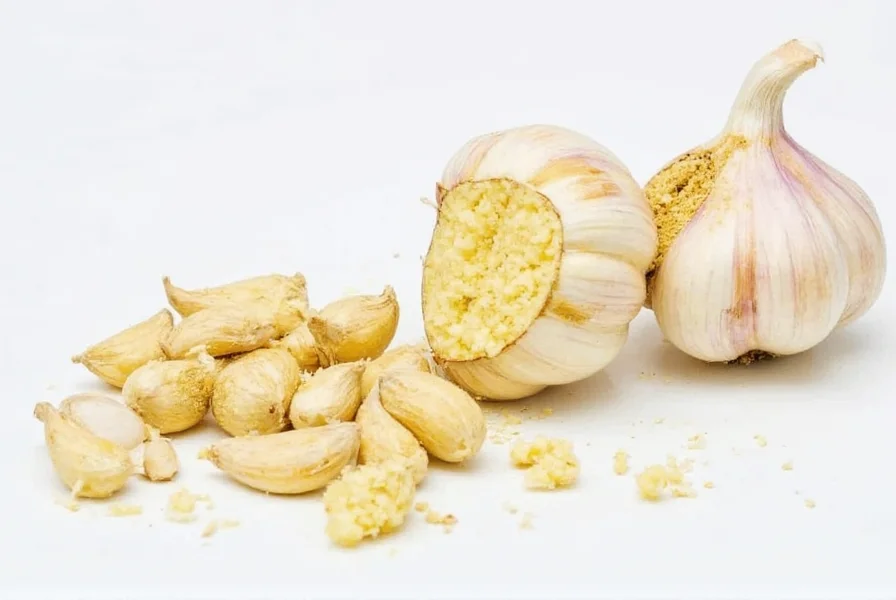Converting fresh garlic to powder requires understanding both the measurement ratio and the flavor concentration differences between these two forms. While the standard conversion is 1 fresh garlic clove to 1/8 teaspoon garlic powder, several factors affect this ratio including garlic variety, clove size, and preparation method.
Understanding the Garlic Conversion Ratio
The 1:1/8 ratio exists because fresh garlic contains about 60-65% water content. When dehydrated to make powder, this moisture evaporates, concentrating the garlic's flavor compounds. A medium-sized garlic clove (about 4-7 grams) yields approximately 0.5 grams of garlic powder after complete dehydration.
| Garlic Form | Equivalent Measurement | Flavor Intensity |
|---|---|---|
| 1 medium fresh clove | 1/8 teaspoon garlic powder | Moderate, fresh, bright |
| 3 fresh cloves | 3/8 teaspoon garlic powder | Stronger, more pungent |
| 1 tablespoon fresh minced | 3/4 teaspoon garlic powder | Most intense, concentrated |
How to Make Garlic Powder at Home
Creating your own garlic powder preserves maximum flavor and avoids additives found in commercial products. Follow these steps for the best homemade garlic powder:
- Peel and slice: Remove skins from fresh garlic cloves and slice thinly (1/8 inch thick)
- Dehydrate: Use a food dehydrator at 135°F (57°C) for 8-12 hours until completely brittle
- Grind: Process dried slices in a spice grinder or mortar and pestle until fine powder forms
- Store: Keep in an airtight container away from light and moisture

Substitution Guidelines for Cooking
When substituting garlic powder for fresh garlic (or vice versa), consider these practical guidelines for different cooking applications:
- Dry rubs and spice blends: Use garlic powder for even distribution and consistent flavor
- Sauces and soups: Fresh garlic provides better texture and gradual flavor release
- Baking: Garlic powder works better in breads and crackers as it won't create moist spots
- Quick-cooking dishes: Garlic powder dissolves instantly, making it ideal for stir-fries
Remember that garlic powder has a more concentrated, slightly sweeter flavor profile compared to fresh garlic's sharp, pungent bite. When converting recipes, start with less powder than the conversion ratio suggests, then adjust to taste.
Flavor Differences and Culinary Applications
Fresh garlic and garlic powder deliver distinctly different flavor experiences in cooking. Fresh garlic contains allicin, which creates that characteristic pungent aroma when crushed or chopped. This compound breaks down quickly, which is why fresh garlic's flavor diminishes faster than powder's.
Garlic powder, being dehydrated, has converted many of these compounds into more stable forms, resulting in a mellower, more consistent flavor that distributes evenly throughout dishes. This makes it particularly valuable in:
- Commercial food production where consistency is critical
- Long-cooking dishes where fresh garlic might become bitter
- Dry seasoning blends that require uniform distribution
- Situations requiring extended shelf stability
Storage Considerations for Maximum Freshness
Proper storage significantly impacts the shelf life and flavor potency of both garlic forms:
- Fresh garlic: Store in a cool, dark, well-ventilated place (not the refrigerator). Properly stored, fresh garlic maintains quality for 3-6 months.
- Garlic powder: Keep in an airtight container away from light and moisture. Commercial powder lasts 2-3 years, while homemade typically remains potent for 6-12 months.
Garlic powder gradually loses potency over time. Test older powder by rubbing a small amount between your fingers - if you don't detect a strong aroma, it's time to replace it. For critical recipes, always use fresh powder to ensure accurate flavor representation.

Avoiding Common Substitution Mistakes
Many home cooks make critical errors when converting between fresh garlic and powder. The most frequent mistakes include:
- Using equal volumes: Treating 1 clove as equal to 1 teaspoon of powder (it's actually 1/8 teaspoon)
- Ignoring recipe timing: Adding powder too early in cooking when it doesn't need prolonged heat exposure
- Not adjusting for age: Using old, weakened powder without increasing the quantity
- Over-substituting in delicate dishes: Using powder in recipes where fresh garlic's texture matters
For best results, always start with the standard garlic cloves to powder conversion ratio, then adjust based on your specific garlic variety, recipe requirements, and personal taste preferences. When in doubt, begin with slightly less powder than the conversion suggests, then taste and adjust.
When to Choose Fresh Garlic vs. Powder
Certain recipes benefit significantly from one form over the other. Understanding these differences helps you make better culinary decisions:
- Choose fresh garlic when: Making aioli, pesto, or other emulsified sauces; preparing roasted garlic dishes; creating dishes where texture matters; making quick sautés where fresh flavor is desired
- Choose garlic powder when: Making dry rubs for meats; preparing baked goods; creating long-simmering sauces where fresh garlic might become bitter; when consistent flavor distribution is critical
Professional chefs often use both forms in the same dish - fresh garlic for immediate flavor impact and powder for background seasoning that withstands longer cooking times. This layered approach creates more complex flavor profiles.











 浙公网安备
33010002000092号
浙公网安备
33010002000092号 浙B2-20120091-4
浙B2-20120091-4